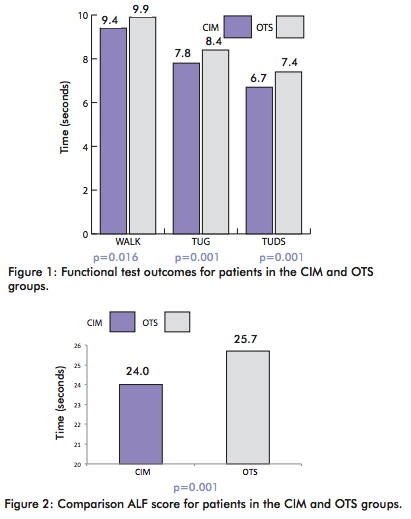Improved Knee Function With Customized vs Off-The-Shelf TKA Implant
Mary O’Connor, MD; Werner Siebert, MD; Johannes Beckman, MD; Franz Kock, MD; Mark visk, MD; Francisco Borja, MD; Alex Van der Ven, MD; Chris Cannova, MD; Edward Rossario, MD; David Mack, MD; Mark Kwartowitz, DO; Derek Johnson, MD; Robert Tait, MD
Summary of the presentation from ICJR Pan-Pacific Congress 2016
Introduction
Knee implants have traditionally been designed using average patient morphology. However, customized total knee implants, which are designed based on individual patient anatomy using a preoperative CT scan, are now available. The objective of this study was to compare patient-reported outcomes and blinded functional tests for patients implanted with these Customized Individually Made (CIM) total knee replacement (TKR) implants to patients with the traditional, off-the-shelf (OTS) implants.
Methods
This multicenter prospective study consecutively enrolled 740 TKA patients at 11 centers (3 Germany, 8 US). Each patient had previously undergone either a unilateral CIMCR (iTotal CR, ConforMIS, Inc., Bedford, MA, 373 patients) or OTS-CR TKR (multiple brands, 367 patients). There were no significant differences between the two groups with regard to BMI or gender. Patients in the CIM TKR group were at a significantly earlier post-operative time-point compared to the OTS group (14 months vs 26 months; p<0.001), and were significantly younger (67 years vs 70 years; p<0.001). Testing was conducted by staff blinded to the type of TKR implanted in the patient. Each patient completed the 2011 New Knee Society Score (KSS) questionaire, performed an 8m Walk (WALK), Timed-Upand-Go (TUG), and the Timed-Up-and-Down-Stairs (TUDS). The Aggregated Locomotor Function (ALF) score was then calculated based on the addition of the average times of the three functional tests (ALF=WALK+TUG+TUDS). Comparisons were made between the CIM and OTS groups using a 2 sample t-test for the functional tests.
Results
Analysis of the functional data showed that patients implanted with a CIM TKR exhibited significantly faster times across all three functional activities analysed (Figure 1). Specifically, patients with a CIM TKR were significantly faster in the WALK activity (p=0.016), TUG (p=0.001), and TUDS (p=0.001). Additionally, patients with CIM TKRs exhibited significantly better ALF scores when compared to patients implanted with OTS TKRs (24.0 seconds vs 25.7 seconds, p=0.001)(Figure 2). Analysis of the KSS scores did not show any difference between CIM and OTS patients.
Discussion
The results of this study demonstrate that CIM patients performed timed functional activities of daily living (WALK, TUG and TUDS) significantly faster than OTS patients in a blinded functional assessment. ALF scores reported by CIM patients compare favorably to OTS patients in this study as well as to those previously published in studies reporting OTS results1. In order to understand the effect of the differences in age and post-op time that were noted between the two groups, subanalyses were conducted to control for age (patients > 65 years; N=500) and post-op time (patients less than 2 years from surgery; N=562). As was the case when we examined all patients collectively, CIM patients exhibited significantly better ALF scores compared to OTS patients when controlling for either of these factors. This suggests that the differences in the demographics noted for the full cohort had little effect on the results. We believe that the customized nature of the implant may provide better functional outcomes for patients implanted with a CIM TKR.
Interested in learning more about how Conformis revolutionized knee replacements thanks to a patented image-to-implant 3D technology?


